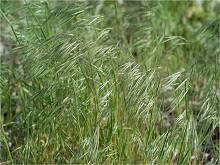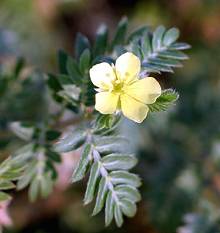The following list consists of weeds commonly found in Larimer County and considered a problem by many landowners. Because these weeds are so frequent in their distribution, management efforts are encouraged but not required in the Larimer County Weed Management Plan. Descriptions, management recommendations, and methods of control are listed.
Troublesome Weeds


No insect biocontrol agents are available for control of cheatgrass. Grazing in the early spring when the grass is palatable can suppress seed head production, but can also be injurious to desirable perennial grasses at that time.

Fire can be an effective tool for cheatgrass management if conducted at the right time. A prescribed burn in the late fall or early spring is least injurious to desirable perennial grasses that are dormant at those times. The goal of a prescribed burn is to generate enough heat from burning the previous season's plant residue to scorch the newly-emerged green seedling cheatgrass. If the fire burns too quickly, or the available fuel is insufficient to burn hot enough, the low-lying cheatgrass seedlings will escape. Cheatgrass proliferates following summer wildfires that eliminate desirable plants and create openings for cheatgrass emergence with late summer rains. Also, fire removes the thatch layer that can disrupt an herbicide's effectiveness.

Kochia
and Russian thistle are the most common annual weeds on roadsides, pasture and farmland of eastern Colorado. These two members of the chenopodiaceae, or goosefoot family, typically germinate in March and April, then flower and set seed from July to October. At maturity these plants break off at the base and become tumbleweeds. Kochia and Russian thistle are often the first weeds to appear on disturbed sites and areas with high soil nitrate content around corrals and barns. Both plants are prolific seed producers, with seed that remains viable in the soil for 2-3 years.The most effective herbicides for controlling kochia are dicamba (Banvel, Vanquish, Clarity) and Vista. 2,4-D works best for controlling Russian thistle. For control of both species apply a combination of dicamba and 2,4-D. This pre-mix is available under numerous brand names such as Outlaw, Rangestar, Veteran 720, Weedmaster, and others.
No insect biocontrol agents are available for control of these 2 species. These plants are palatable to livestock when green and grazing can provide suppression, though not control.
Tillage or hand pulling is effective for controlling these annuals. Mowing is only a temporary solution, as kochia and Russian thistle will quickly re-grow, often in a stand more dense and uniform than prior to mowing.

The most effective herbicides for control of field bindweed are Tordon, Arsenal, Plateau, Paramount, dicamba, and 2,4-D.

Shallow tillage (disk, sweep) can be counter-productive, creating a denser, more uniform stand of field bindweed. Deeper tillage, if feasible, such as moldboard plowing can provide 1-2 years control.

The most effective herbicides for controlling annual mustards are Escort, Plateau/Panoramic, and Telar. Mustard species are frequently referenced in the herbicide guide because of this plant family's unique tolerance to numerous herbicides used for managing other noxious weeds.
No insect biocontrol agents are available for control of these species. Mustards are generally not palatable to livestock.
Hand pulling and digging are effective methods for control of annual plants.

Common mullein is a biennial plant commonly found in disturbed areas of range and pasture.
Common mullein seldom appears to have invasive characteristics except on heavily disturbed sites such as intensively grazed pastures, prairie dog colonies, or sites severely impacted by wildfire. Common mullein seed germinates in the late summer or fall producing a rosette with soft, velvet-like leaves. Yellow flowers grow from a tall, solitary stalk that appears in mid-summer.
The most effective herbicides for controlling common mullein are Escort, Milestone, and Telar when used with a good surfactant.

Hand pulling or digging this biennial is an effective method of control if the top 2-3 inches of tap root is removed.


Mechanical treatments such as cutting, bulldozing, and fire are temporarily effective for controlling Russian olives, but re-sprouting is a problem that requires an herbicide application to prevent subsequent treatments the following season.

Numerous selective herbicides (won't injure grasses) are effective for controlling puncturevine, the problem with managing this persistent weed is staying after multiple flushes that occur during the growing season. Dicamba (Banvel, Vanquish, Clarity), 2,4-D, and Vista effectively control emerged puncturevine. For soil residual activity, Telar and Tordon provide season-long control.

Digging and pulling provide effective control of annual weeds such as puncturevine. If plants have set seed, plant material should be bagged and disposed of to prevent seed dispersal.



